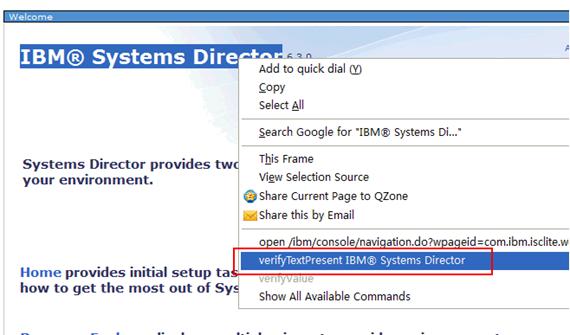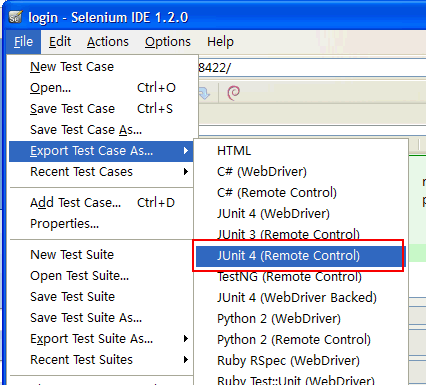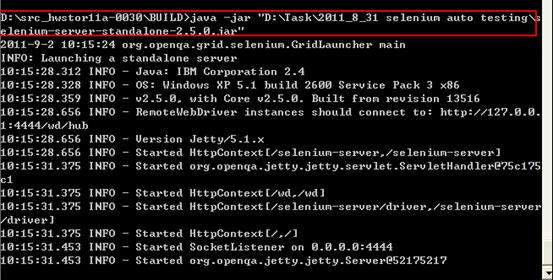使用 Selenium 实现基于 Web 的自动化测试(3)

图 5. 通过确认是否包含某些文字来验证是否成功登录
使用 Selenium IDE 导出 JUnit 测试用例
在 Selenium IDE 中执行成功后,就可以把测试脚本导出成 JUnit 测试用例了,如图 6 所示:

图 6. 导出 JUnit 代码
导出用例如下:
清单 1. VerifyLogin.java
|
import com.thoughtworks.selenium.*; import org.junit.After; import org.junit.Before; import org.junit.Test; public class VerifyLogin extends SeleneseTestCase { @Before public void setUp() throws Exception { selenium = new DefaultSelenium ("localhost", 4444, "*chrome", "localhost:8422/"); selenium.start(); } @Test public void testVerifyDirectorLogin() throws Exception { selenium.setTimeout("300000"); selenium.open("/ibm/console/logon.jsp"); selenium.type("id=j_username", "test"); selenium.type("id=j_password", "test"); selenium.click("id=other"); selenium.waitForPageToLoad("300000"); verifyTrue(selenium.isTextPresent("IBM Systems Director")); } @After public void tearDown() throws Exception { selenium.stop(); } } |
说明:首先实例化一个 DefaultSelenium 对象,传入的参数分别是 RC 服务器 IP、端口、浏览器类型和待测试的 Server 的信息。然后在测试方法里调用 Selenium 1 的 API,这里的代码完全由 IDE 生成,就为我们省去了很多重复代码工作。
运行测试用例:
有了基于 JUnit 的运行测试用例就可以把它导入到 Java IDE 中执行测试了。执行中既需要客户端驱动支持(用于 Eclipse 编译),也需要启动 RC Server:
Selenium RC Server 下载:http://seleniumhq.org/download/
Selenium Client Driver:http://seleniumhq.org/download/
执行命令 java –jar selenium-server-standalone-2.5.0.jar 启动 Selenium RC Server:

图 7. 启动 Selenium RC Server
启动后就可以直接在 Eclipse 中运行测试用例,RC Server 就会启动新窗口并自动按照录制脚本进行测试。并可在 Eclipse 中查看运行结果。
下面让我们看看怎样脱离 Eclipse 自己搭建一个可以持续测试的容器。
原文转自:http://www.uml.org.cn/Test/201707182.asp





